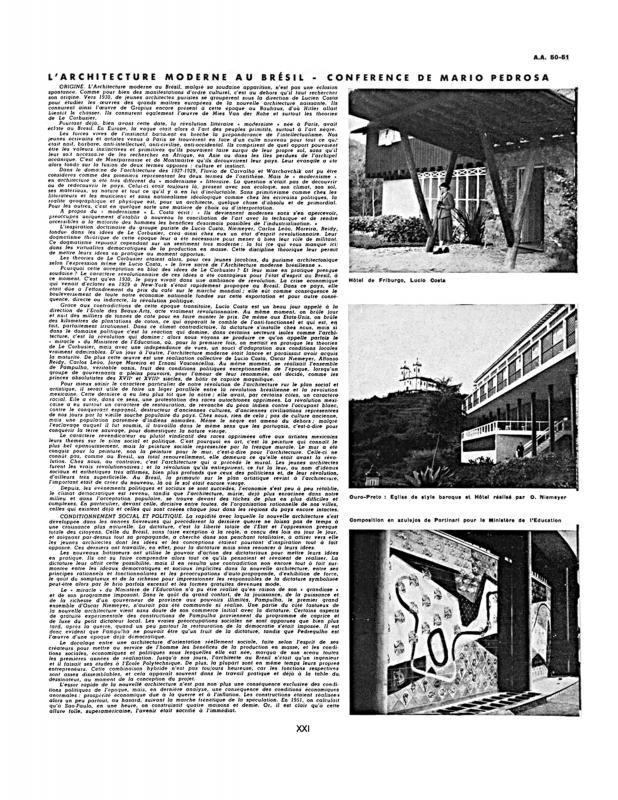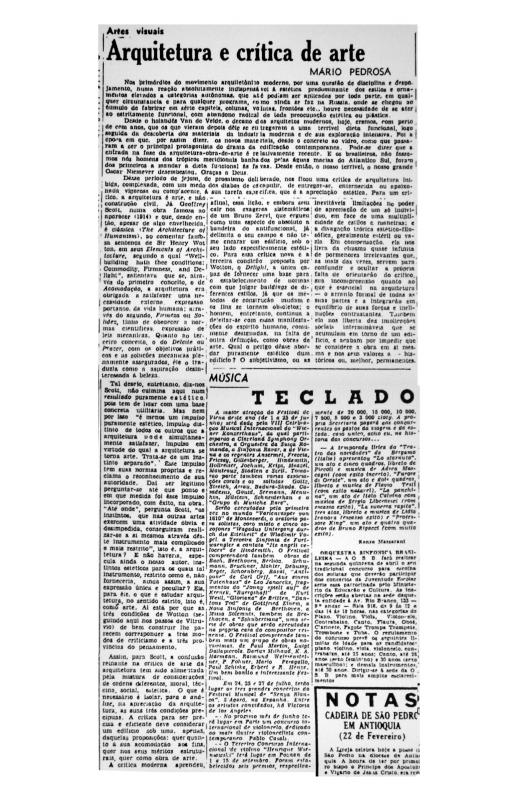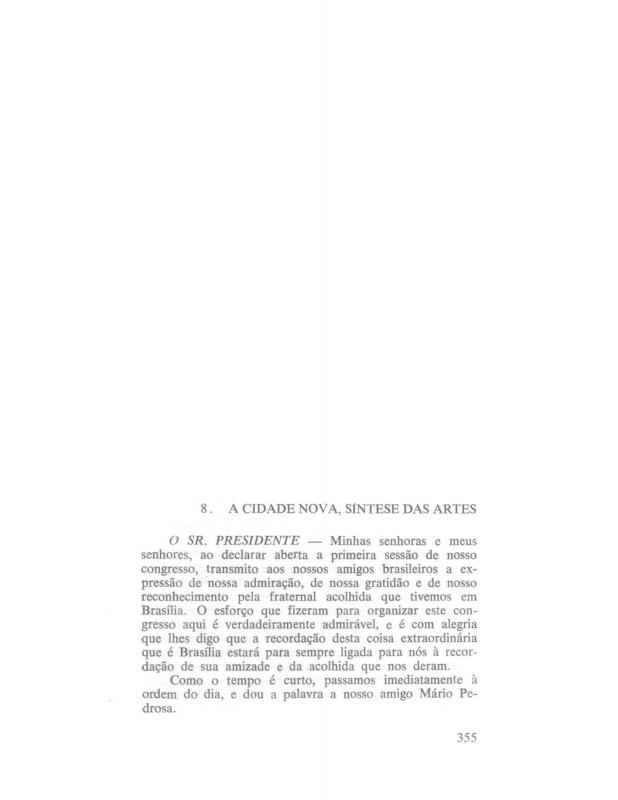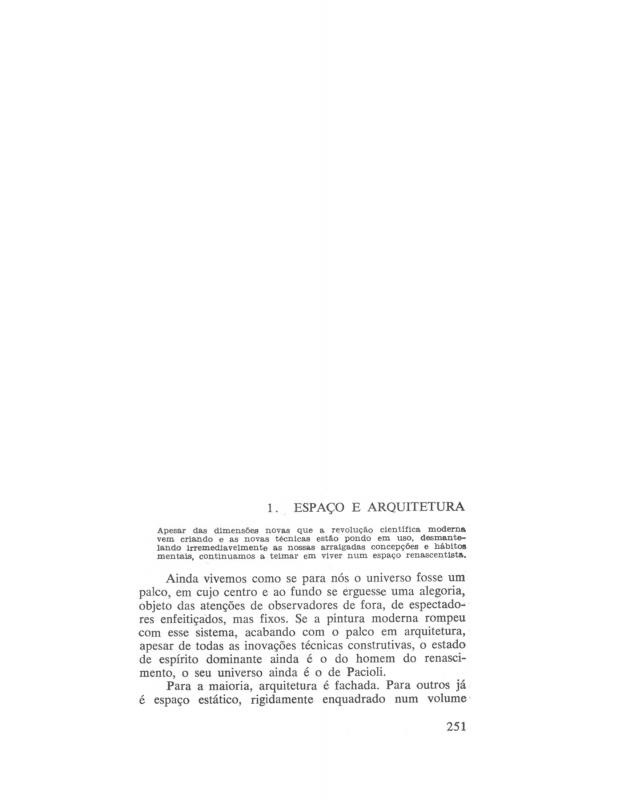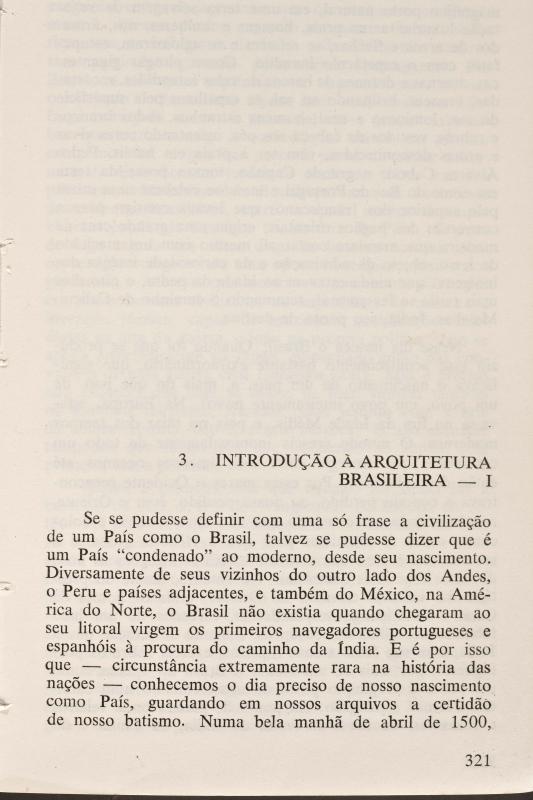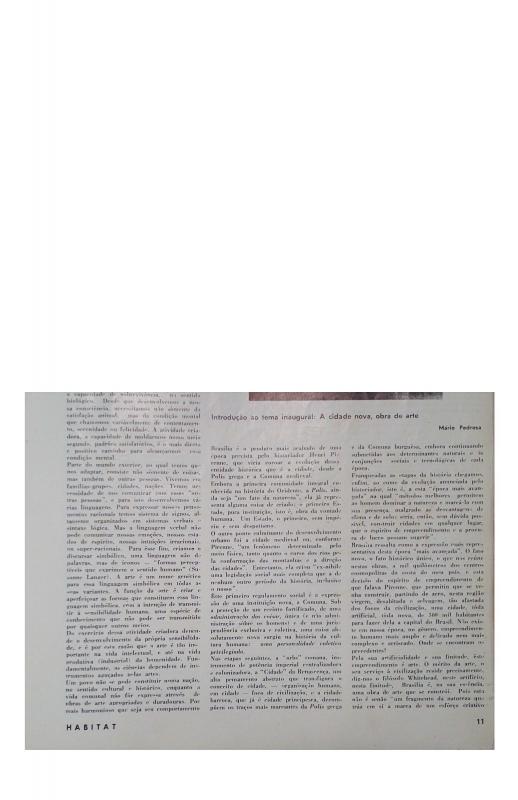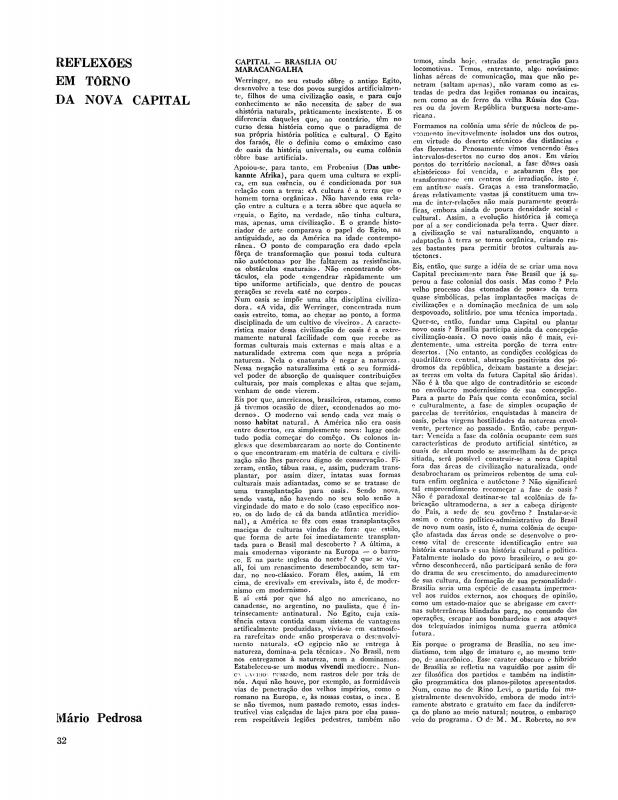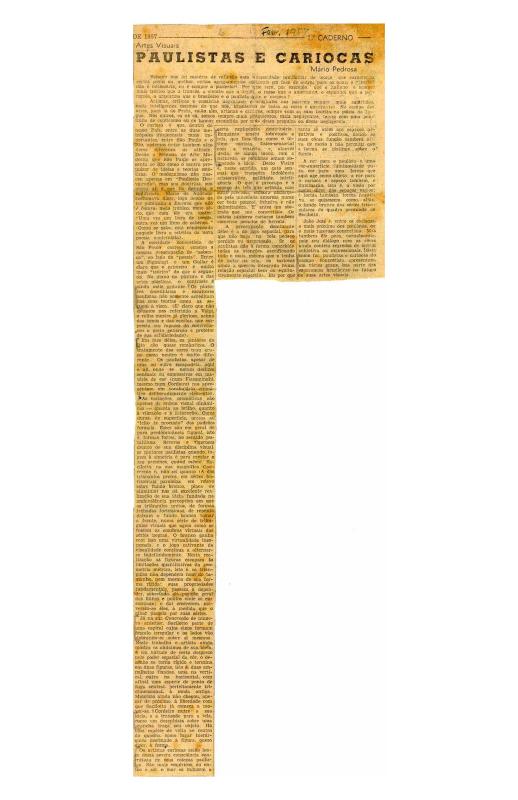Mário Pedrosa’s radical proposal for the establishment of a Museu das Origens to replace the MAM-RJ—after it was partly destroyed by a fire in 1978—is based on the view that modern art was influenced by non-Western peoples. Unsurprisingly, Pedrosa’s idea never bore fruit. But this document reflects his belief that, in addition to modern and contemporary works, a truly representative Brazilian art museum should include naïve paintings and those produced by indigenous peoples, black artists, and those deemed to be “virgin” artists, meaning children and psychiatric patients.
The intellectual and politician Mário Pedrosa (1900–81) is undoubtedly Brazil’s most important twentieth-century art theoretician and critic. He was originally an international politics columnist for the Diário da Noite, and joined the PCB (Brazilian Communist Party) in the 1920s. He was imprisoned in 1932 for his political affiliation (he was a Trotskyite at the time). He lived in exile in France and New York during the Getulio Vargas regime’s Estado Novo, but returned to Brazil after the war, at which time he worked for Correio da Manhã. His anti-Stalin convictions prompted him to start the weekly publication Vanguarda Socialista. His thesis on aesthetic teaching, “Da natureza afetiva da forma na obra de arte” (1949), which he presented at the Faculdade de Arquitetura (Rio), included all his knowledge of philosophy and Gestalt psychology. At that time he was one of the founders of the AICA (1948) and he helped organize the International Congress of Art Critics (Brasilia, 1959). He wrote an art criticism column for the Tribuna da Imprensa (1950–54), was among the organizers of the 2nd and 3rd São Paulo Biennials (1953 and 1955), and was appointed director of the MAM-SP (1961–63). He was Secretary of the National Council of Culture during the brief Jânio Quadros administration. During the military dictatorship he went to Chile, where he became the director of the Museo de la Solidaridad in Santiago. After the Pinochet coup (1973) he moved to Havana as the Secretary of the Museo de la Resistencia Salvador Allende. He returned to Brazil in 1977 (in the early days of the Amnesty) and was the first to sign the founding manifesto for the PT (Partido dos Trabalhadores, 1980). His huge library (eight thousand volumes) is partially accessible at the Biblioteca Nacional de Rio de Janeiro.
[As complementary reading, see the following essays by Mário Pedrosa in the ICAA digital archive: “L’architecture moderne au Brésil” (doc. no. 1086489); “Arquitetura e crítica de arte” (doc. no. 1086553); “A cidade nova, síntese das artes” (doc. no. 1086503); “Espaço e arquitetura” (doc. no. 1087020); “Introdução à arquitetura brasileira – I; Introdução à arquitetura brasileira – II” (doc. no. 1086620); “Introdução ao tema inaugural: A cidade nova, obra de arte” (doc. no. 1110409); “MAM: reconstrução” (doc. no. 1111078); “Parecer sôbre o ‘CORE’ da Cidade Universitária” (doc. no. 1110830); “Reflexões em torno da nova capital” (doc. no. 1086728); and “Paulistas e cariocas” (doc. no. 1085056), among other articles].

